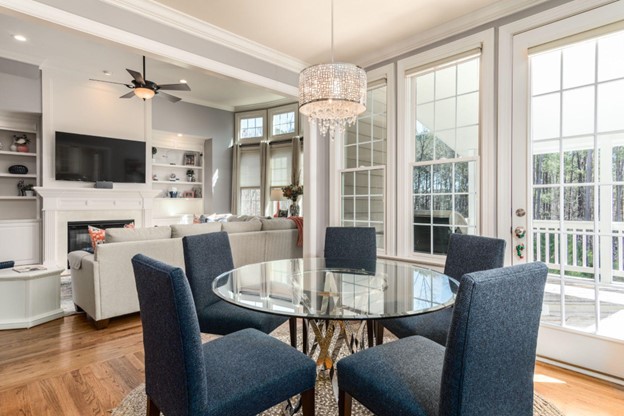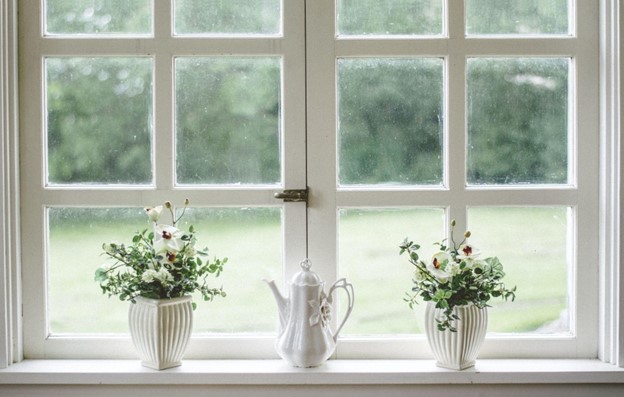What Are Hurricane Windows And Do You Need Them?
Even if you don’t live in a hurricane-prone area, hurricane-resistant windows may add safety and comfort to your house. The NOAA reports that since 1851, the US has been hit by over 300 hurricanes. Nearly one-third of these storms have been classified as Category 3, 4, or 5.
Florida is by far the state with the highest number of hurricanes that make landfall; these states are particularly vulnerable since they border both the Atlantic and Gulf of Mexico. Hurricane shutters or windows, which provide protection from strong winds, are required by building rules in several areas of that state. Since 2012, new construction in coastal areas ranging from Texas to Maine has been required to comply with the International Building Code.
Strong winds occur during a storm, which can quickly lift and toss trash through the air. Flying pieces of broken glass that hit windows are dangerous for anybody around. Furthermore, now that the glass is gone, the internal structure of the building is vulnerable to damage from the elements. All of that may be avoided with Paradise Exteriors hurricane windows that are professionally installed at your home prior to the beginning of the storm season.

Hurricane Windows: What Are They?
Windows are designed to withstand flying debris and winds up to a hurricane.
Hurricane windows have two layers of tempered as well as laminated glass instead of one, joined to a transparent polymer film in the middle (often polyvinyl butyral). When anything hits the glass, it breaks. However, it adheres to the center plastic layer, which is still intact to block out the wind, rather than flying off in all directions.
Hurricane windows often have sturdy steel or wood frames. Certain inexpensive windows could feature metal or plastic frames. Hurricane windows must be properly installed to offer the best possible protection.
What’s the difference between impact windows and hurricane windows?
Impact- and hurricane-resistant windows are nearly synonymous. The distinction is that in storm-prone locations, hurricane windows have to comply with construction requirements. Depending on the situation where they are put in a building, they go through one of two examinations.
Windows erected lower than 35 feet above the ground need to be able to withstand the force of a 2×4 shot at the glass at a speed of around 50 ft per second from a cannon. A separate test is used for those over 35 feet, firing a lot of ball bearings at the glass. There must be two exams because during a storm, the power of the airborne debris changes with height.
Broward and Miami-Dade Counties, as well as the state, must approve hurricane windows before they may be marketed in Florida. The latter two, in southern Florida, are subject to stricter regulations due to the heavier storms that occur there, in the zone known as the Highest Velocity Hurricane Zone (HVHZ).
Other states’ hurricane windows are not required to meet Florida requirements. However, it’s a selling point if they do.
Hurricane Window Types
The greatest pressure difference that a hurricane window can endure determines its design pressure (DP) rating. The intricate formula relates to the strength of the storm.
One that has a DP rating of 10 is expected to be able to resist a Category 1 hurricane, with winds up to 95 mph. an hour. Twenty rated storms should hold up against a Category 2, as well as so on, even for DP 5 storms (highest wind speed surpassing 157 mph).
Although most every window type can be fitted with hurricane rated windowpanes, some of the types of windows are much easier to fit with this type of pane. Your window installer will be able to give you more information on the best type for your home and where your home is located in the storm zones. There are seven different formats for hurricane windows, including:
- Single-hung
- Double-hung
- Bay
- Picture/fixed,
- Sliding/rolling
- Casement (Click here to read more on casement windows)
Windows are stocked by dealers in conventional sizes, identified by a four-digit identifier. The designation 2436 is for a normal 24-by-36-inch bedroom window. Custom sizes are also accepted by the majority of vendors.

Hurricane Windows’ advantages
It’s evident that living in hurricane country is advantageous. Storm shutters and plywood coverings for windows, which Floridians used to do when hurricanes were approaching, are not necessary nowadays. There are further advantages.
Compared to standard single-pane windows, hurricane windows are thicker, therefore they reduce noise and your home is more silent.
UV protection: Even in the absence of a UV-blocking coating, the middle polymer layer and the laminated glass inherently filter out strong sunlight. Click here to read more on UV coatings.
Energy efficiency: Compared to ordinary windows, hurricane windows offer superior thermal insulation.
Security for your home: Windows that can weather a hurricane will also resist attempts by burglars to smash them and enter your home.
The cost of hurricane windows is by far its biggest disadvantage. Not only are they more expensive to buy and install than traditional windows, but they also cost more to replace when they fail. Other than that, there are fewer design alternatives than with traditional windows.

Hurricane Windows Cost
Purchasing hurricane windows for a whole house typically costs about $8,000. Among the variables affecting costs are:
Window size and location: Installing windows on higher stories requires more effort.
The costliest frame material is wood, while aluminum is the least expensive.
Special features: Low-emissivity glass and stabilizer bars (https://auto.howstuffworks.com/question432.htm) are more expensive.
Permit fees: These range from $50 to $200, depending on the location. Your local permitting office can assist you in obtaining the actual costs for window permits. Contact your local authority if permits aren’t included in the price quote for your window installation.
When installing new roofing in hurricane-prone areas, homeowners can save money by doing it off-season. Additionally, the bipartisan spending bill of 2018 offers a $200 federal tax credit for each new hurricane window installed by homeowners.



